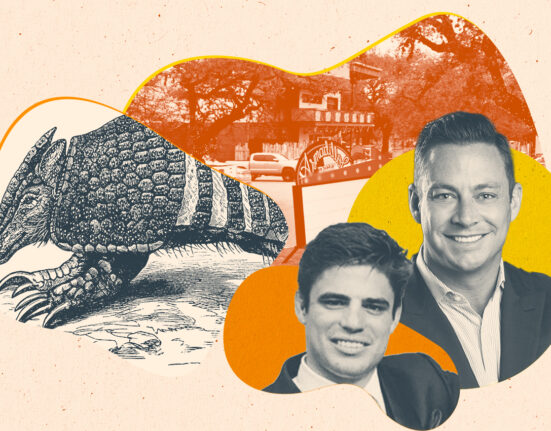Ultra-high-net-worth art collectors are pulling back, according to a new report conducted during the summer by Art Basel and UBS.
Of roughly 2,800 collectors surveyed, those who commonly buy artworks priced at $1 million or more fell from 12% in 2021 to 4% in 2022, a nearly 67% decline. The median expenditure on art and antiques actually rose 19% from 2021 to 2022, to $65,000 total, and the median level for the first half of 2023—also $65,000—could still point to further growth. “It indicates that the high end is there, but it’s thinning out,” says Clare McAndrew, who founded the research and consulting firm Arts Economics and prepared the report.“ In 2021, people were back and spending with a vengeance, and budgets were out the window,” she continues. “We’ve seen that decline.”
Spending in the art tier exceeding $1 million bounced back in the first part of 2023, to 9%, but the report noted that “even with these increases, levels were below those of 2021 and previous years.” This tracks with the overall high-end art market, where top-tier contemporary art sales are down substantially, both at auction and in dealers’ reported sales, even as collectors line up in droves for major art events.
“Collectors continue to be enthusiastic about art and collecting, more broadly,” says Paul Donovan, chief economist of UBS Global Wealth Management. “We have seen an ongoing willingness to purchase art, to engage in the art market, attend art fairs and so on, but there does seem to have been something of a shift,” he continues. “People are researching a bit more in depth; I wouldn’t say they’re more cautious, but they’re more considered in their purchases.”
The report was conducted in July and August, McAndrew says. As a result, many of the individuals surveyed, particularly those in Mainland China and Hong Kong, may have reported a rosier state of affairs than currently exists. “The big problem with the report is that it’s a snapshot at a point in time,” says McAndrew. “If we surveyed now, we’d get slightly different results.”
BUYING ON CREDIT
Respondents numbered about 400 each in the US, mainland China and Hong Kong, and roughly 200 each in the UK, France, Germany, Italy, Taiwan, Singapore, Japan and Brazil. Notably, 43% reported using credit or loans to finance purchases of art; 30% had used financing in 2022 or 2023. Out of the people who financed, ultra-high-net-worth collectors resorted to loans more often, with the average share of the value of their collections financed through credit coming in at 39%. Among that upper wealth bracket, one-third had financed over 50% of their collections. This contrasts with collectors whose wealth is under $5 million. Of that tier, only 2% of their collection was bought with debt.
Given that the ultrarich reported spending less on $1 million-plus art but also reported that they were continuing to finance their art purchases, higher interest rates seem not to have stopped the rich from collecting; they may simply be buying cheaper art. “I didn’t realize how much high-net-worth individuals are using art as an asset to leverage their wealth portfolios in different ways,” McAndrew says. “People in lower tiers tend to buy art when they think they can buy something special for themselves. It’s a different realm, really.”
WARNING SIGNS
Amid pockets of good news (54% of respondents planned to buy art in the ensuing year, the same percentage as last year) are warning signs for the art market.
The average allocation to art in respondents’ wealth portfolios declined, from 24% in 2022 to 19% in 2023. This could, the report speculates, indicate “a more cautious approach to collecting, with a greater focus on more liquid financial assets, or less inclination to spend on discretionary purchases than in previous years.” That said, the richer a respondent was, the larger the proportion of art in their overall portfolio. “It tended to rise with the ultra-high net worth,” McAndrew says. “They tend to allocate much higher levels to artworks.” Respondents whose wealth surpassed $50 million had an average of nearly 30% of their portfolio allocated to art.
And despite the fact that art collectors are drawn to the field for what Donovan says is a hybrid phenomenon—“Art is generally a physical possession,” he says, “but it’s also an intensely social experience”—the report’s respondents said they were planning to pare participation. Wealthy collectors indicated that they would attend 32 art-related events this year, nine fewer than in 2019.
Given the pace of world events, it’s difficult, McAndrew says, to extrapolate broadly about the art market’s future performance. “Things can change so quickly,” she says. “We’ve seen major things happen in just a couple of months.”







